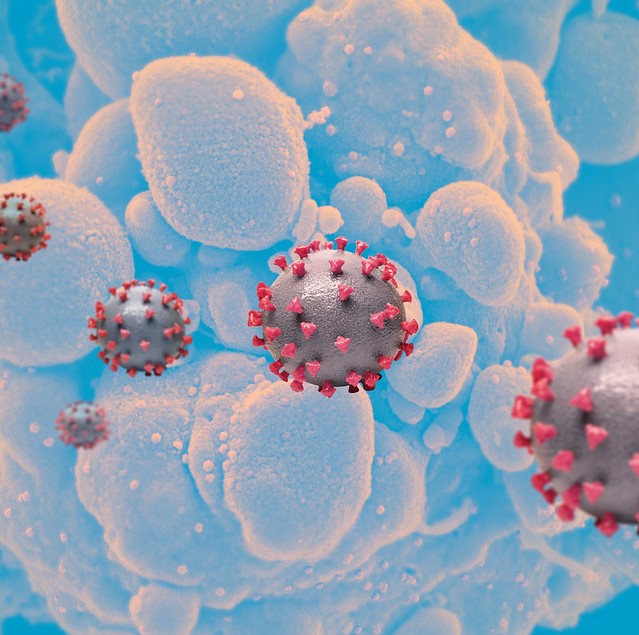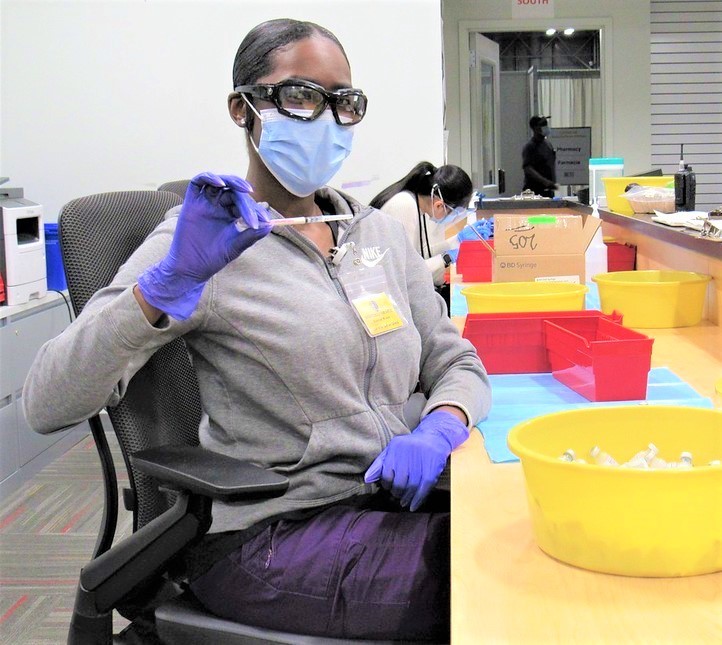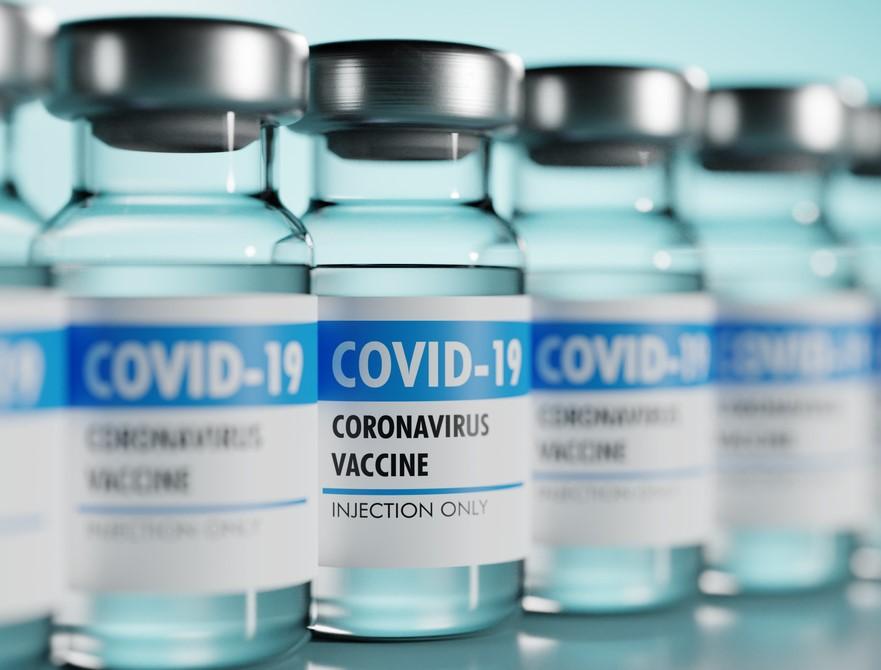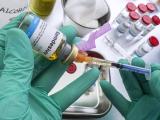Today the University of Minnesota's Center for Infectious Disease Research and Policy (CIDRAP) published a draft version of a Coronavirus Vaccines Research & Development (R&D) Roadmap (CVR), highlighting strategies to develop vaccines that are effective against new COVID-19 variants, as well as coronaviruses that have not yet emerged in people.
The roadmap draft is available for public review and comment.
The roadmap, which is supported by the Bill & Melinda Gates Foundation and The Rockefeller Foundation, acts as a bridge between the crisis phase of the pandemic and planning for a future in which coronaviruses, including SARS-CoV-2, the cause of COVID-19, continue to cause significant morbidity and mortality around the globe. To combat current and future threats from this family of viruses, the authors of the roadmap advocate for broadly protective coronavirus vaccines that would protect against multiple viruses.
"Aware of the pandemic threat still posed by coronaviruses, researchers worldwide are building on lessons learnt from the COVID-19 vaccine successes in renewed efforts to develop pan-coronavirus vaccines," said Helen Rees, PhD, the founder and executive director of the Wits Reproductive Health and HIV Institute and a member of the CVR steering group.
"What's needed are vaccines that are durable, with a wide breadth of protection, and with schedules and formulations that simplify programmatic delivery."
CIDRAP publishes CIDRAP News, but the center's news service operates independently of its research and policy efforts.
Three significant coronaviruses in 20 years
In the past 20 years, three new coronaviruses have jumped from animal reservoirs, causing human epidemics: SARS (severe acute respiratory syndrome)-CoV-1, which caused deadly outbreaks in Hong Kong, Singapore, and Canada in 2003; MERS (Middle East respiratory syndrome)-CoV which was first described in Saudi Arabia in 2012; and COVID-19, which to date has killed at least 6.5 million people around the world.
SARS and MERS have high case-fatality rates (CFRs), 10% and 35% respectively. Fortunately neither SARS nor MERS is highly transmissible between humans. The case-fatality rate (CFR) for COVID-19 is much lower, around 1%, but the virus is much more transmissible, with 500 million documented cases worldwide since 2020, and new variants are proving to escape immune protection from previous infections and vaccination. The bigger threat is a future coronavirus that has a case fatality ratio (CFR) approaching that of SARS or MERS, but is as transmissible as COVID-19.
![]()
 "COVID-19 is the third coronavirus to jump from animals to humans in two decades," said Eve Lackritz, MD, deputy director of CIDRAP and a medical epidemiologist. "Currently-available SARS-CoV-2 vaccines have waning immunity; viruses are mutating and escaping detection. We need better vaccines to protect against both new SARS-CoV-2 variants and the next coronaviruses that may emerge and cause future epidemics. ."
"COVID-19 is the third coronavirus to jump from animals to humans in two decades," said Eve Lackritz, MD, deputy director of CIDRAP and a medical epidemiologist. "Currently-available SARS-CoV-2 vaccines have waning immunity; viruses are mutating and escaping detection. We need better vaccines to protect against both new SARS-CoV-2 variants and the next coronaviruses that may emerge and cause future epidemics. ."
That better preparation comes, ideally, in the form of broadly protective coronavirus vaccines, those that will protect more broadly against the virus, according to the authors of the roadmap.
"We need to be better prepared for new SARS-CoV-2 variants and coronaviruses that may emerge in the future," Lackritz said. "If the redesigning of vaccines is based on variants that are circulating now, we are already behind."
Current COVID-19 vaccines will not 'sustain us'
CIDRAP Director Michael T. Osterholm, PhD, MPH, said the roadmap does not intend to cloud the achievements of the current COVID-19 vaccines, of which there are 11 currently approved by the World Health Organization.
"The current vaccines we have for COVID-19 have played a critical role in reducing morbidity and mortality, but they are not the vaccines that will sustain us in the future with coronavirus infections," he said.
Osterholm was clear that the roadmap is not meant to confuse readers or dissuade them from getting vaccinated and boosted with current options.
"The current vaccines should be used," Osterholm said. "But we need to look at vaccines that address more robust immunity, with a broad breadth of protection."
Though the mRNA vaccines were developed quickly, recent studies have shown that primary series and booster doses do not offer lasting protection beyond 3 to 5 months. Moreover, frequent boosters of the mRNA vaccines has made uptake and public opinion of the vaccines falter.
Osterholm said he compares the current crop of vaccines to the first mobile phones.
"We would not think those phones are satisfactory today," he explained.
Next threat not if but when
According to the roadmap, animal-to-human spillover events are likely to keep happening with coronaviruses. Both SARS-CoV-1 and MERS-CoV likely originated in bats, the authors of the roadmap write in a commentary in Vaccine, and then later adapted to palm civets (SARS-CoV-1) and dromedary camels (MERS-CoV).
SARS-CoV-2 also likely originated in bats, although the exact origin has yet to be determined. Regardless, researchers have identified more than 500 coronaviruses in bats, which remain the main reservoir for the viruses.
"We can expect that pathogenic coronaviruses will continue to emerge from the bat reservoir or some intermediate animal host in the future," the authors write.
"We learned from the COVID-19 pandemic that coronaviruses readily cross species, and we also learned that there is a large number of coronavirus in bats," said Stanley Perlman, MD, PhD, a professor of microbiology and immunology, and pediatrics at the University of Iowa. Perlman  was also on the Steering Group for the roadmap. ”Developing a universal vaccine efficacious against all coronaviruses—or even just the subgroup that contains SARS-CoV and SARS-CoV-2—would allow vaccination to begin as soon as transmission across species occurred, or potentially even as part of ongoing vaccination strategies."
was also on the Steering Group for the roadmap. ”Developing a universal vaccine efficacious against all coronaviruses—or even just the subgroup that contains SARS-CoV and SARS-CoV-2—would allow vaccination to begin as soon as transmission across species occurred, or potentially even as part of ongoing vaccination strategies."
A universal coronavirus vaccine requires research and development endeavors that look at a number of platforms and routes of delivery, Lackritz said.
"Currently we focus on protecting against severe disease and death," she said. "Maybe we get to the point where we can block transmission."
Challenges of developing a universal vaccine
The authors of the roadmap identify five key challenges facing researchers approaching a universal coronavirus vaccine: First, there needs to be a better understanding of the natural reservoirs of coronaviruses, especially in bats. That will lead to an improved understating of which coronaviruses are primed for animal-to-human spillover events, the second challenge.
Researchers also must identify highly conserved B- and T-cell epitopes across a broad range of coronaviruses, which will be key to future vaccine design. Also needed is clarification regarding the role of mucosal immunity in creating durable vaccines. Finally, the authors emphasize the development of validated and standardized correlates of protection, or how immune response correlates to actual protection from infection and disease.
"This is a broad and complex agenda. The roadmap will provide structure and coordination so that all different stakeholders can be on the same stage in carrying out a plan," said Lackritz.
















